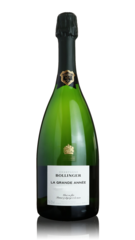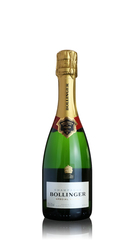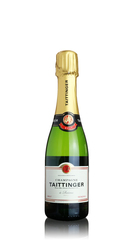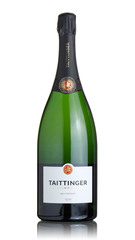World Champagne Day 2022

"Every day is Champagne Day" according to our Retail Supervisor and wine tasting host Phil Appleby. Can you disagree?
Here at Noble Green Wines we need no excuse to delve into the world of Champagne. So we thought why not do a bit of education on what WineGB classes as World Champagne Day - on Friday 28th October.
The name Champagne was derived from the Latin term campania. It was in the early Middle Ages that the name was applied to the now know province in north-east France. Now it is separated into ‘Champagne pouilleuse’ and ‘Champagne viticole’. The capital letter C in Champagne indicating the geographical descriptions and the lower case p and v used for the wine.
Rheims, Épernay, and A are the three towns of Champagne. The champagne region was the first to make sparkling wine in any quantity, champagne historically became synonymous with the finest. It is now however, only responsible for less than 1/12 bottles of sparkling wine production in the total world production.
Other countries like Australia and the west coast of America have employed the winemaking method (the traditional method) and grape varieties as Champagne, much like other countries have done with Bordeaux and Burgundy. Because of this, Champenois decided to tighten up their regulations, this increasing the average quality of their wines.
The History

"Although there are numerous legends concerning earlier vineyards, the first serious mention is at the time of St Rémi at the end of the 5th century ad. For nearly eight centuries after Clovis, first king of the Francs, was baptized in Rheims in 496, the city’s position as the spiritual centre of France naturally boosted its fame." "Vines had already been planted around the city, mainly by the numerous local abbeys and by the local nobility. But until the 17th century there was no generic ‘vin de Champagne’." "The wine trade was centred on Rheims and Châlons-sur-Marne, and the wines had the great advantage of immediate access to the Marne, which joined the Seine just east of paris (see rivers)." "But the wines did not sparkle: they were light, pinkish still wines made from the Pinot Noir grape. In the last half of the 17th century, winemaking greatly improved, under the auspices of leading clerical winemakers, led by Dom pérignon, who transformed the Abbey of Hautvillers, above Épernay, into the region’s leading centre of viticultural progress. The wines’ fame grew greatly in the second half of the 17th century when they were introduced to the Court of Versailles, notably by the Marquis de Sillery, a large landowner in the region, and by the Marquis de St-Évremond, who introduced champagne to London society after he was banished to Britain in 1662." (www.jancisrobinson.com. (2019). Champagne | JancisRobinson.com. [online] Available at: https://www.jancisrobinson.com/ocw/detail/champagne)
Climate and Geography

"Much of the appellation (and Champagne is now the only major French region to have just one appellation), and all the better crus, are on the slopes of the hills typical of the region. The vines’ roots dig deep into calcareous depths, providing ideal conditions of drainage and humidity." (www.jancisrobinson.com. (2019). Champagne | JancisRobinson.com. [online] Available at: https://www.jancisrobinson.com/ocw/detail/champagne)
Vine Varieties

"The remaining 32% is planted with pinot meunier, a variety much more important in Champagne than anywhere else, particularly in the Valley of the Marne. It provides many champagnes with an early-maturing richness and fruitiness." (www.jancisrobinson.com. (2019). Champagne | JancisRobinson.com. [online] Available at: https://www.jancisrobinson.com/ocw/detail/champagne)
Winemaking

"Since 1990, all pressing centres have had to comply with certain minimum standards. Traditionally 2,666 l/704 gal were extracted from every marc: the first 2,050 l were the cuvée, the next 410 l the premières tailles, while the final 206 l were the deuxièmes tailles." "The juice is allowed to settle for between 12 and 48 hours, at a low temperature. A small but increasing number of producers ferment the must in oak, but the overwhelming majority of the grapes are fermented in stainless steel vats." "Most winemakers use a strain of yeast specially developed by the CIVC. Immediately after the first fermentation, most, but by no means all, champagnes now undergo malolactic conversion." "Before the wine is bottled, a measured dose of bottling liquor (liqueur de tirage), a mixture of wine, sugar, and specially developed yeasts, is added to the wine. The bottles are then capped, usually with a crown cap lined with plastic. Following tirage, lees contact, riddling, and disgorgement, a sweetening dosage is usually added before final corking. A few champagnes are sold without any added sugar at all; most are brut." (www.jancisrobinson.com. (2019). Champagne | JancisRobinson.com. [online] Available at: https://www.jancisrobinson.com/ocw/detail/champagne)
Styles of Champagne

"This century has seen a fashion for pink or rosé champagne made either by adding a small proportion of red wine to the blend or, less usually, by letting the juice remain in contact with the skin of the grapes for a short time during fermentation. All the major firms have now followed the example of Roederer with their Cristal bottling and Moët & Chandon with Dom Pérignon and produce ‘luxury’, ‘de luxe’, or prestige cuvées to show their house styles at their best." (www.jancisrobinson.com. (2019). Champagne | JancisRobinson.com. [online] Available at: https://www.jancisrobinson.com/ocw/detail/champagne)



























